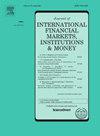The effect of margin trading, stock index futures, and firm characteristics on stock price synchronicity: Evidence from China
IF 6.1
2区 经济学
Q1 BUSINESS, FINANCE
Journal of International Financial Markets Institutions & Money
Pub Date : 2025-05-06
DOI:10.1016/j.intfin.2025.102165
引用次数: 0
Abstract
This paper examines the effects of margin trading and stock index futures and the moderating role of firm-level and institution-level characteristics on stock price synchronicity in the Chinese stock markets. We find that both margin trading and stock index futures are positively correlated with stock price synchronicity. Margin trading and stock index futures have greater effects on state-owned enterprises (SOEs), firms with political connections, and firms with male CEOs. Domestic-listed firms and firms in regions with less institutional efficiency experience stronger effects of margin trading and stock index futures on stock price synchronicity. The financial crisis has a negative impact on the above relationships. Overall, margin trading exhibits a stronger effect on stock price synchronicity than stock index futures. Furthermore, we find that the breadth of institutional ownership, management entrenchment, transparency, and information asymmetry are significant channels in moderating the effect of margin trading and stock index futures on stock price synchronicity.
融资融券交易、股指期货和企业特征对股价同步性的影响:来自中国的证据
本文考察了融资融券交易和股指期货对中国股市股价同步性的影响,以及公司层面和机构层面特征对股价同步性的调节作用。我们发现融资融券交易和股指期货都与股价同步性呈正相关。融资融券交易和股指期货对国有企业、有政治关系的企业和男性ceo的企业影响更大。融资融券交易和股指期货对国内上市公司和制度效率较低地区公司股价同步性的影响更强。金融危机对上述关系产生了负面影响。总体而言,融资融券交易对股价同步性的影响强于股指期货。此外,我们发现机构持股的广度、管理层的固定性、透明度和信息不对称是调节融资融券交易和股指期货对股价同步性影响的重要渠道。
本文章由计算机程序翻译,如有差异,请以英文原文为准。
求助全文
约1分钟内获得全文
求助全文
来源期刊
CiteScore
6.60
自引率
10.00%
发文量
142
期刊介绍:
International trade, financing and investments, and the related cash and credit transactions, have grown at an extremely rapid pace in recent years. The international monetary system has continued to evolve to accommodate the need for foreign-currency denominated transactions and in the process has provided opportunities for its ongoing observation and study. The purpose of the Journal of International Financial Markets, Institutions & Money is to publish rigorous, original articles dealing with the international aspects of financial markets, institutions and money. Theoretical/conceptual and empirical papers providing meaningful insights into the subject areas will be considered. The following topic areas, although not exhaustive, are representative of the coverage in this Journal. • International financial markets • International securities markets • Foreign exchange markets • Eurocurrency markets • International syndications • Term structures of Eurocurrency rates • Determination of exchange rates • Information, speculation and parity • Forward rates and swaps • International payment mechanisms • International commercial banking; • International investment banking • Central bank intervention • International monetary systems • Balance of payments.

 求助内容:
求助内容: 应助结果提醒方式:
应助结果提醒方式:


